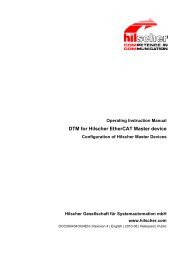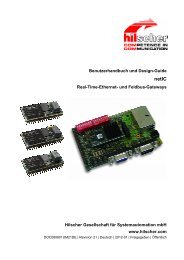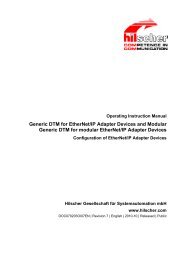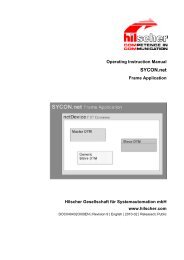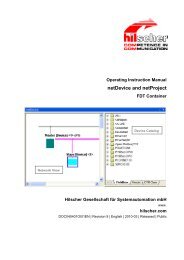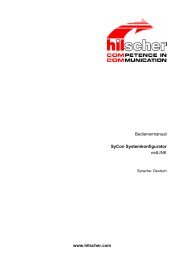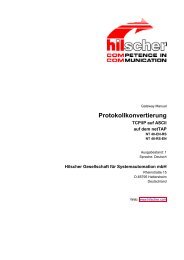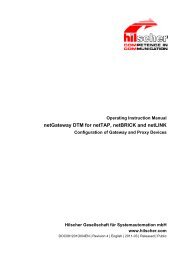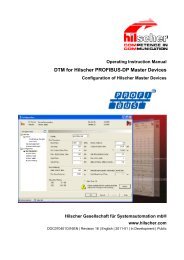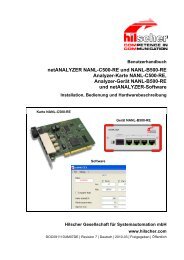SYCON.net PROFIBUS DP Slave DTM
SYCON.net PROFIBUS DP Slave DTM
SYCON.net PROFIBUS DP Slave DTM
You also want an ePaper? Increase the reach of your titles
YUMPU automatically turns print PDFs into web optimized ePapers that Google loves.
Glossary 124/132<br />
Master<br />
<strong>Slave</strong><br />
Sync<br />
<strong>PROFIBUS</strong> <strong>DP</strong> Master devices initiate the data traffic on the bus. In the<br />
<strong>PROFIBUS</strong> protocol Master devices are called active participants. A master<br />
may send messages without external request.<br />
<strong>Slave</strong> devices are peripheral devices, like for example I/O devices or<br />
drives. <strong>Slave</strong> devices are also called passive participants. They do not<br />
receive the bus access authorization. That means, they may only accept<br />
received messages from the Master or send a message to the Master after<br />
enquiry of the Master.<br />
With the control command SYNC the <strong>DP</strong>-Master arranges the <strong>DP</strong>-<strong>Slave</strong>,<br />
that the <strong>DP</strong>-<strong>Slave</strong> freezes the states of the Outputs on the actual value.<br />
During the following telegrams the <strong>DP</strong>-<strong>Slave</strong> saves the Output data in each<br />
case, which it has save as Output data. The Outputs are first updated<br />
cyclically until the <strong>DP</strong>-Master sends the control command UNSYNC. The<br />
<strong>DP</strong>-<strong>Slave</strong> has to be assigned to a group for the control command SYNC in<br />
the configuration.<br />
<strong>DTM</strong> for Hilscher <strong>PROFIBUS</strong> <strong>DP</strong> <strong>Slave</strong> Device | Configuration of Hilscher <strong>Slave</strong> Devices<br />
DOC091001OI07EN | Revision 7 | English | 2011-09 | Released | Public © Hilscher, 2009-2011




